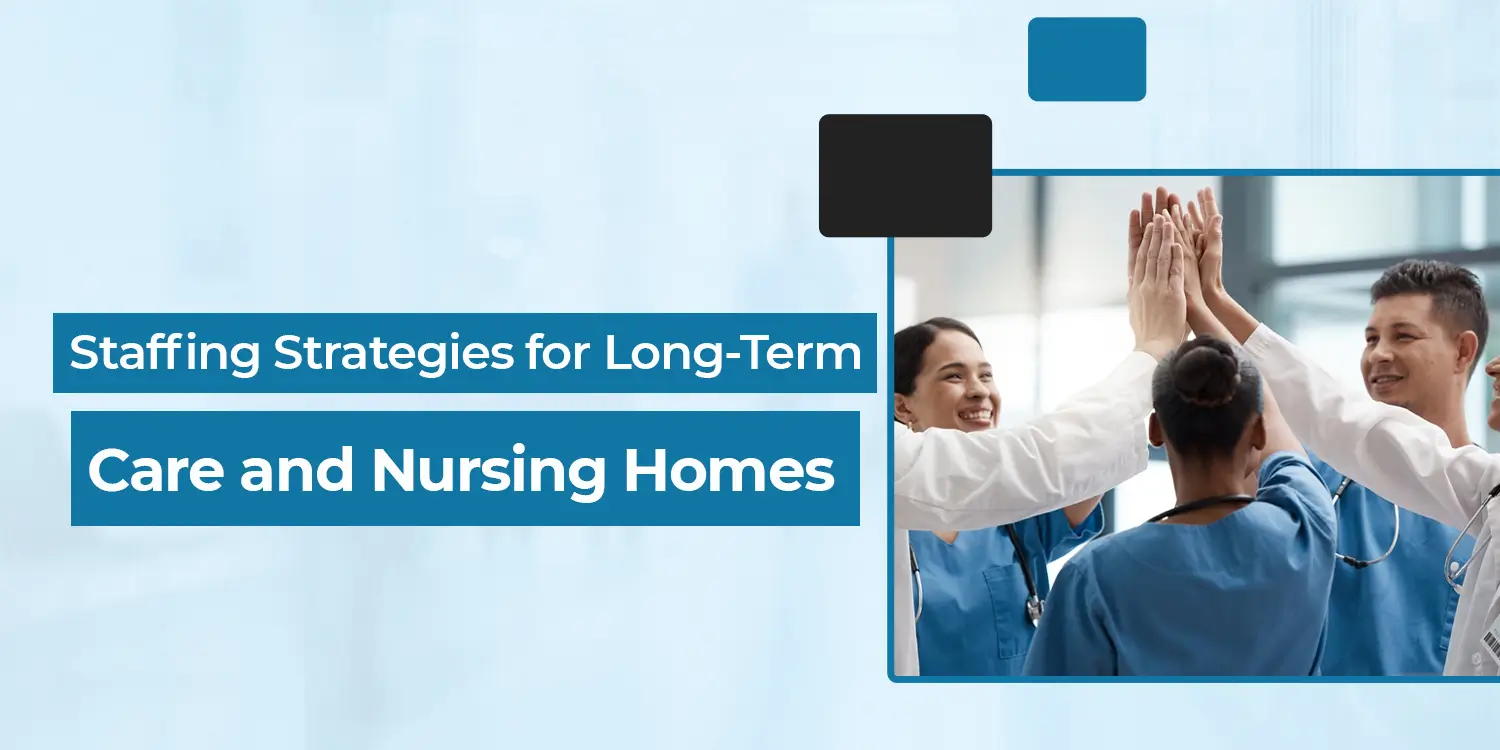Running a nursing home or long-term care facility is no small feat. Beyond the walls, equipment, and routines, the real heart of elder care lies in its people the caregivers, nurses, and support staff who show up every day. Yet, one of the toughest hurdles in this sector is ensuring consistent, reliable, and compassionate staffing. At JR Enterprise, we understand that crafting smart long-term care staffing strategies is the cornerstone of building sustainable, people-first facilities.
In this blog, we’ll explore practical staffing approaches, highlight challenges, and share insights on how facilities can strengthen their workforce to meet both today’s and tomorrow’s demands.
Why Staffing Matters in Long-Term Care
Staffing is not just about filling shifts it’s about safeguarding dignity, ensuring safety, and delivering quality care. A strong long-term care workforce directly influences patient outcomes, resident satisfaction, and even regulatory compliance.
Poor staffing leads to burnout, high turnover, and an increased risk of errors. On the flip side, when nursing home staffing is well-planned, it fosters stability, improves morale, and creates a healthier environment for both caregivers and residents.
Common Healthcare Staffing Challenges
Before diving into strategies, it’s crucial to understand the hurdles that facilities face. Some of the most pressing healthcare staffing challenges include:
- High turnover rates – Burnout and demanding schedules push many workers out of the field.
- Recruitment struggles – Finding skilled caregivers is harder as the aging population grows.
- Regulatory pressure – Facilities must meet strict staffing ratios and compliance standards.
- Workforce shortages – The demand for elder care workers outpaces supply, leaving many homes understaffed.
Addressing these challenges requires a proactive, creative, and people-centered approach to workforce planning for elder care.
1. Smart Workforce Planning for Elder Care
Strategic planning means looking beyond the day-to-day schedule. Facilities should forecast needs based on resident care levels, anticipated admissions, and seasonal fluctuations. A solid workforce plan allows administrators to balance full-time, part-time, and per-diem staff, reducing the risk of last-minute gaps.
Modern workforce management tools can help automate scheduling, track overtime, and ensure compliance making staffing less reactive and more intentional.
2. Building Strong Recruitment Pipelines
Caregiver recruitment has become increasingly competitive. Facilities that want to thrive need to go beyond traditional job postings. Strategies that work include:
- Partnering with schools and training centers – Create direct pathways for nursing students and CNA graduates.
- Offering referral bonuses – Encourage current staff to bring in qualified candidates.
- Highlighting workplace culture – Today’s workforce values supportive, flexible environments as much as pay.
By positioning themselves as not just employers but as nurturing communities, nursing homes can attract caregivers who are passionate about elder care.
3. Retention Through Support and Growth
Recruitment is only half the battle—keeping staff engaged is equally critical. Facilities should focus on retention by:
- Investing in training – Ongoing education builds confidence and improves care quality.
- Offering flexible schedules – Respect for work-life balance reduces burnout.
- Creating recognition programs – Celebrating milestones, big or small, fosters loyalty.
- Promoting career pathways – From CNA to LPN to RN, showing growth opportunities keeps staff motivated.
When employees feel valued and see a future within the organization, turnover drops significantly.
4. Leveraging Technology in Staffing
Technology can be a quiet but powerful ally in long-term care staffing strategies. Digital scheduling systems, telehealth integrations, and AI-driven workforce analytics help administrators predict staffing needs and cut down on inefficiencies.
Additionally, communication apps make it easier for caregivers to swap shifts, stay informed, and feel connected, reducing friction in day-to-day operations.
5. Cultivating a Positive Care Culture
Ultimately, staffing isn’t just about numbers it’s about culture. A facility that nurtures empathy, teamwork, and mutual respect naturally attracts and retains caregivers. Administrators play a pivotal role in setting the tone, ensuring that every worker from nurse to dietary aide feels their contribution matters.
Residents benefit most when staff are supported, empowered, and happy in their roles.
Looking Ahead: Sustainable Staffing Solutions
The future of elder care depends on bold, adaptable strategies. With the aging population on the rise, the pressure on nursing home staffing will only grow. Facilities that embrace innovation, invest in their people, and remain flexible will be the ones that thrive.
At JR Enterprise, we believe staffing is more than filling a shift it’s about building a resilient long-term care workforce that provides comfort, safety, and compassion. By combining smart planning, recruitment innovation, and supportive work environments, nursing homes can ensure that residents receive the highest standard of care today and in the years to come.
Final Thoughts
The landscape of long-term care is evolving, and staffing will remain one of its defining challenges. Yet, with thoughtful long-term care staffing strategies, facilities can transform obstacles into opportunities. From caregiver recruitment to workforce planning for elder care, the goal is simple: create a stable, engaged team that brings dignity and quality of life to every resident.
At JR Enterprise, we’re dedicated to helping facilities navigate these challenges and build sustainable staffing models that work not just for today, but for the future of elder care.


One Comment